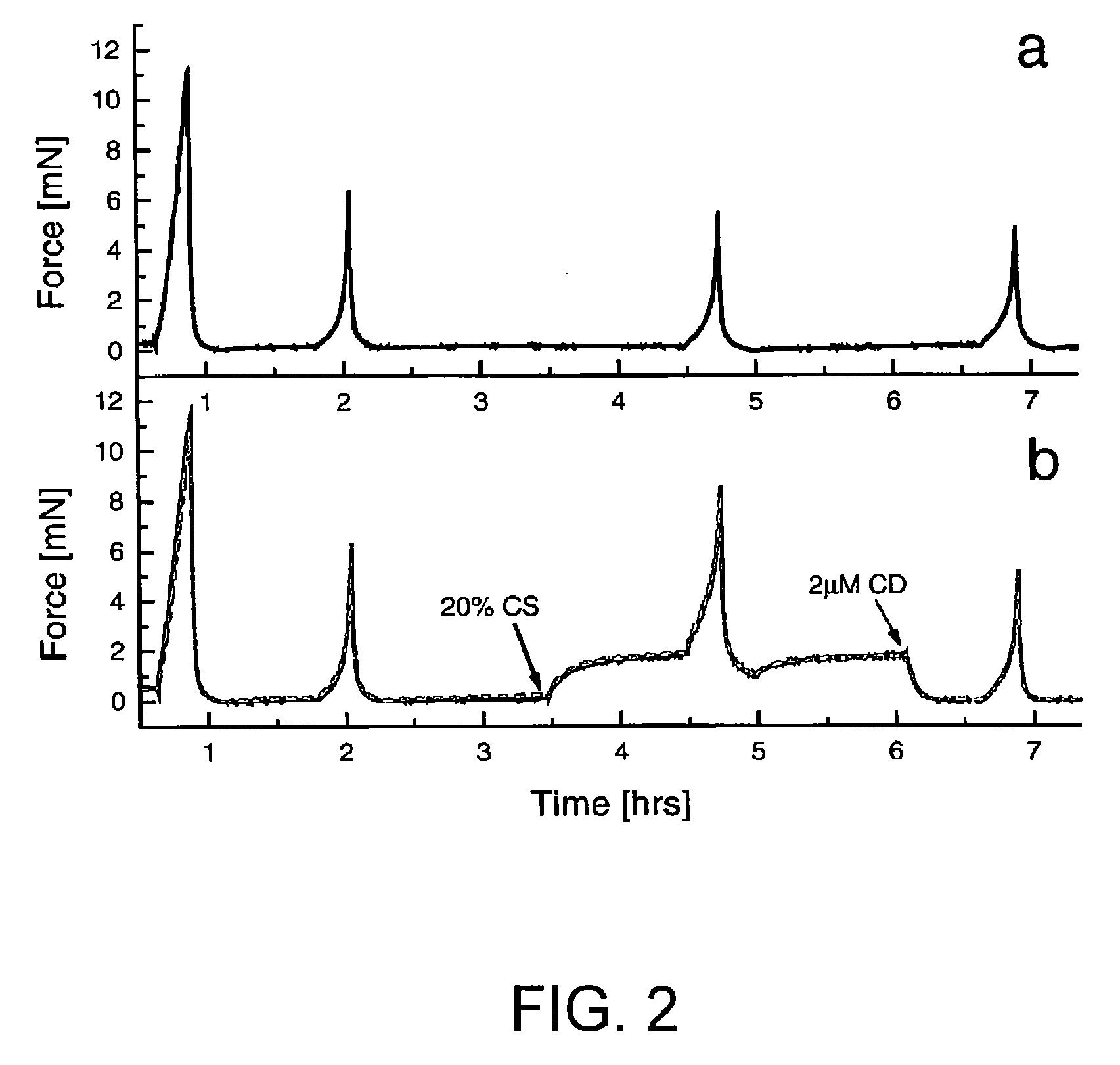Systems for screening pharmaceutical chemicals
a technology of pharmaceutical chemicals and screening systems, applied in the direction of apparatus sterilization, specific use bioreactors/fermenters, after-treatment of biomass, etc., can solve the problems of increasing process cost and time, and the measurement of these responses does not necessarily provide information abou
- Summary
- Abstract
- Description
- Claims
- Application Information
AI Technical Summary
Benefits of technology
Problems solved by technology
Method used
Image
Examples
example 1
Preparation of Tissue Models
[0127] Bio-artificial living tissue models were prepared from cells and extracellular matrix (ECM). These models simulate natural tissues.
[0128] Chicken embryo fibroblasts (CEF's) isolated from 11-day chicken embryos (Spafas Inc., Preston, Conn.) were maintained in Dulbecco's modified Eagle's medium (DMEM) supplemented with 10% fetal calf serum (FCS), penicillin at 50 units / ml, and streptomycin at 50 microgram / milliliter. The CEF's used to make tissue models were passaged once or twice from primary cultures. Monomeric collagen solubilized in 0.02 M acetic acid (Upstate Biotechnology Inc., Lake Placid, N.Y.) was neutralized at 4° C. with 0.1 N NaOH and mixed with concentrated DMEM stock to yield a final normal DMEM concentration. The fibroblasts suspended by trypsin (FIG. 1a) were mixed with the collagen solution (FIG. 1b), the cell suspension was poured into Teflon casting wells (FIG. 1c), and the wells were incubated at 37° C. with 5% CO2 (FIG. 1d). Th...
example 2
Measurements on and Mechanical Assembly of a Ring System
[0130] Mechanical measurements were carried out using a ring system. After two days of incubation (serum starvation for the final 12-16 hours), the mandrel was removed from the casting well and the tissue model-ring was removed gently from the mandrel. As shown in FIG. 1 the tissue model-ring was looped over the triangular hook connected to an isometric force transducer (Model 52-9545, Harvard Apparatus, South Natick, Mass.) by a fine, flexible gold chain. The ring was also looped over a horizontal bar connected to a sliding element moveable vertically and linearly by a stepper motor (P / N 1-19-3400 24V DC 1.8° step size, Haward Industry, St. Louis, Mo.) controlled by a micro-stepping driver (IM483 Intelligent Motion Systems) to measure stress and dynamic modulus of the sample. The micro-stepping driver was controlled by a personal computer with software which enabled the stepper motor to achieve smooth motion. An analog-to-dig...
example 3
Testing of Tissue Model System
[0132] Typically, for stiffness measurements, the tissue model is subjected to a sequence of stretch cycles. In each cycle the tissue model is slowly stretched from 0 to 20% over 30 minutes and the tissue model is then returned at the same rate to its original length by actuation of the stepper motor. The resulting increase in contractile force during the first stretch is substantially larger than the contractile force in subsequent stretches (FIG. 2a). For each stretch after the first stretch there is a further small decrease in maximum contractile force, but the decrease becomes negligible after sufficient pre-stretching. The tissue models produced contractile force in response to the activation of fibroblasts by serum. This contractile force was abolished by disrupting the actin cytoskeleton with cytochalasin D (2 μM) (FIG. 2b).
[0133] The amplitude of the force response divided by the stretching amplitude corresponded to the dynamic stiffness of th...
PUM
| Property | Measurement | Unit |
|---|---|---|
| diameter | aaaaa | aaaaa |
| diameter | aaaaa | aaaaa |
| diameter | aaaaa | aaaaa |
Abstract
Description
Claims
Application Information
 Login to View More
Login to View More - R&D
- Intellectual Property
- Life Sciences
- Materials
- Tech Scout
- Unparalleled Data Quality
- Higher Quality Content
- 60% Fewer Hallucinations
Browse by: Latest US Patents, China's latest patents, Technical Efficacy Thesaurus, Application Domain, Technology Topic, Popular Technical Reports.
© 2025 PatSnap. All rights reserved.Legal|Privacy policy|Modern Slavery Act Transparency Statement|Sitemap|About US| Contact US: help@patsnap.com



